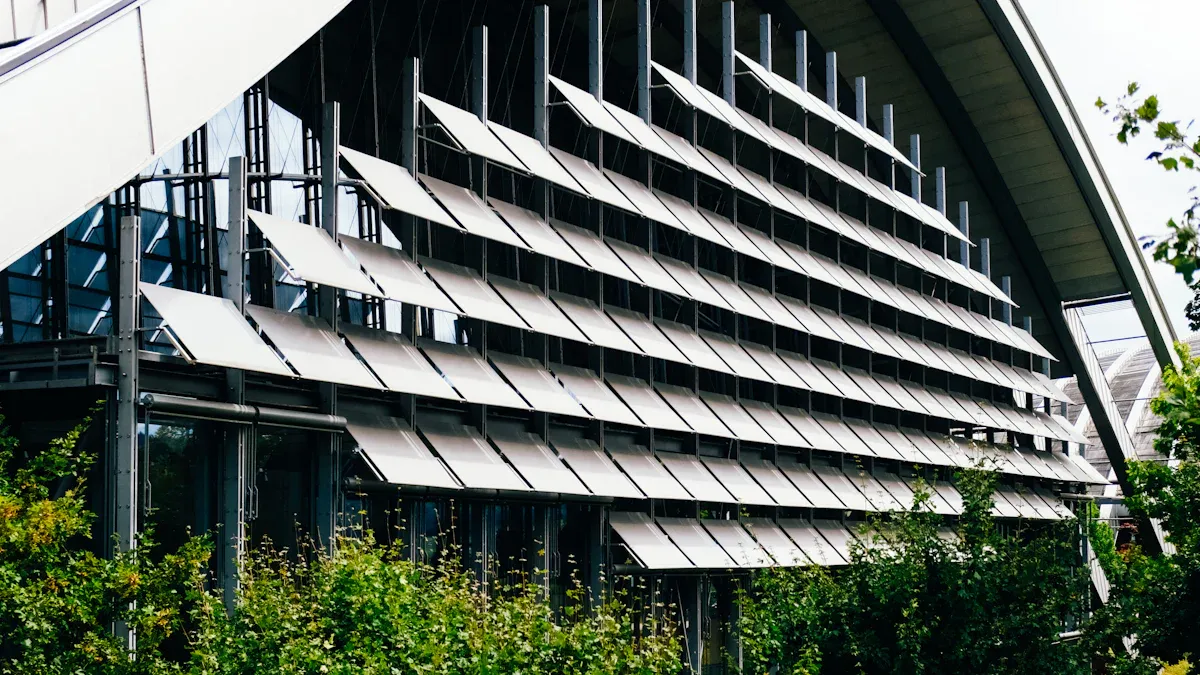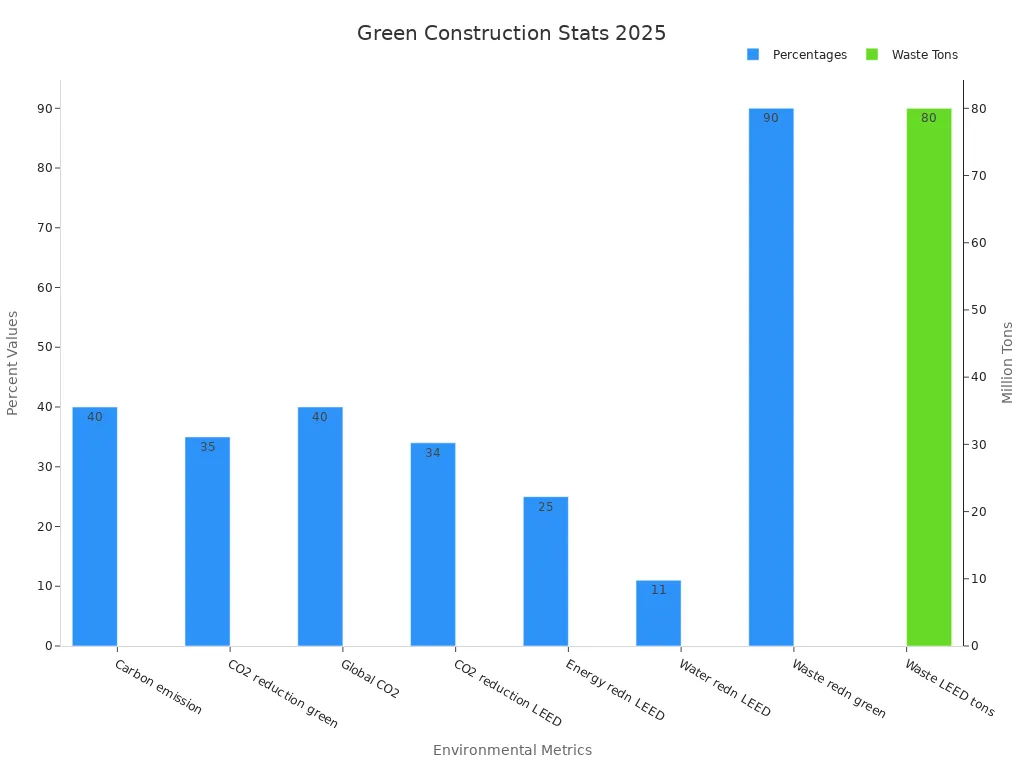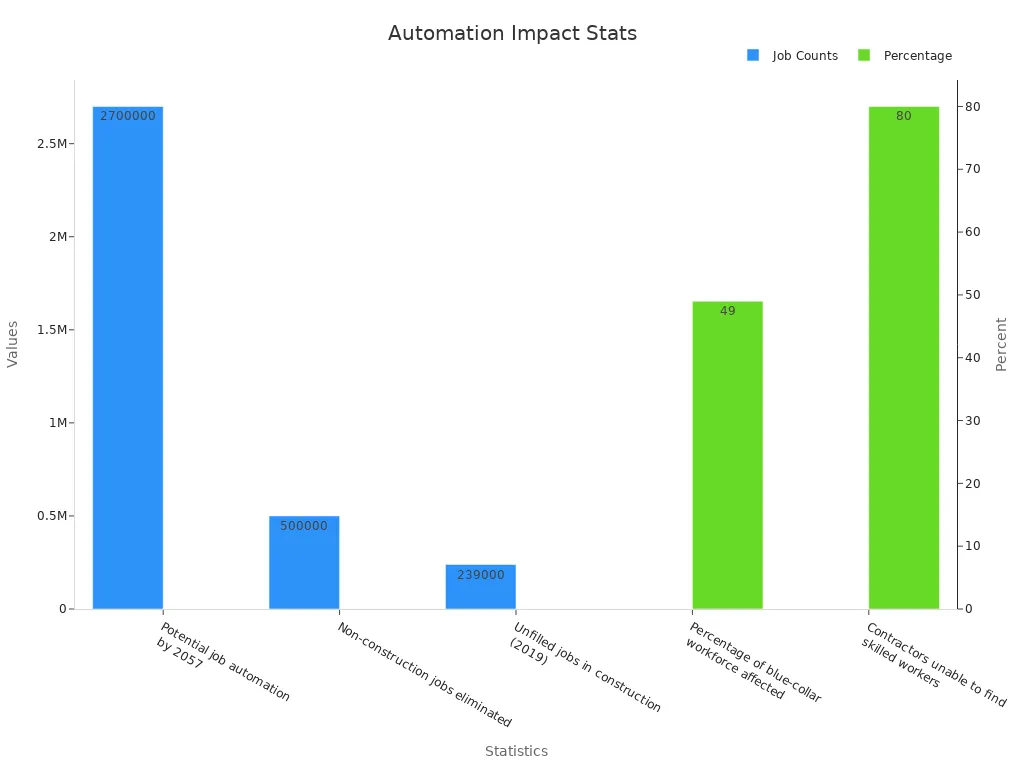The construction field in 2025 shows big improvements, supported by some impressive construction facts. There is a 12% increase in total output, and spending went over $2 trillion by early 2024. Jobs grew to 8.3 million, setting new records. New tools like AI cut costs by 15%. These facts illustrate how construction keeps changing and growing.
FJD Smart Systems – Transforming Construction with Technology
Construction is evolving rapidly with advanced technologies like 3D machine control and LiDAR scanning, improving accuracy, efficiency, and safety. FJDynamics’ innovative solutions bring cutting-edge automation and real-time data to modern construction sites. Here are some key construction facts and how FJD’s systems contribute:
Key Construction Facts & FJD Solutions:
Precision is Crucial – Even a small miscalculation in excavation can lead to costly rework. The FJD G31 Pro 3D Excavator Guidance System provides centimeter-level accuracy for trenching, foundation digging, and earthmoving.
Surveying is the Backbone of Construction – Accurate site data is essential before breaking ground. The FJD Trion P1 LiDAR Scanner captures high-resolution 3D terrain models, ensuring accurate site planning and design.
LiDAR is Revolutionizing Infrastructure – LiDAR technology is now widely used for structural monitoring and smart city planning. The FJD Trion S1 3D LiDAR Scanner provides real-time 3D data for surveying, mapping, and infrastructure assessment.
With automation, real-time monitoring, and advanced surveying, FJD’s solutions help construction teams reduce errors, improve productivity, and build with confidence.
Upgrade your construction workflow with FJD technology—get a quote today!
Record-Breaking Construction Facts
The Great Pyramid of Giza: A 3,800-Year Record Holder
The Great Pyramid of Giza is an amazing ancient structure. Built 3,800 years ago, it was the tallest for centuries. It stands 481 feet (146.6 meters) tall and has 2.3 million stones. Each stone weighs between 3 and 90 tons. Experts think 4,000 main workers and 20,000 helpers built it. The size and detail still impress people today. It shows how skilled ancient builders were.

The Tallest Building in 2025: A New Global Icon
In 2025, the Jeddah Tower in Saudi Arabia is the tallest. It is over 3,280 feet (1,000 meters) high, breaking records. This is the first building taller than a kilometer. Its modern design shows how far engineering has come. The Jeddah Tower is more than a building. It is a symbol of human creativity and big dreams.

The Longest Bridge Ever Built: Engineering Marvels
China’s Danyang-Kunshan Grand Bridge is the longest bridge ever. It stretches 102.4 miles and is part of a high-speed railway. Engineers made its foundation strong enough to handle earthquakes. Finished in 2011, it connects faraway places and beats natural challenges. This bridge proves how smart and determined people can be.

These amazing projects show how construction keeps breaking limits and achieving more.
Technological Advancements in Construction

3D-Printed Buildings: The Future of Construction
3D printing is changing how buildings are made. Builders use this technology to create structures layer by layer. Special materials make this process faster and cheaper than old methods. It also allows for creative designs with unique shapes and layouts.
This method is better for the environment too. It creates less waste and uses fewer resources. For example, some 3D-printed homes are built in just 24 hours. This saves time and lowers the chance of injuries on-site. As 3D printing improves, it will change how construction is done.
Drones on Construction Sites: Efficiency Redefined
Drones are making construction sites safer and more efficient. These flying tools give a bird’s-eye view of the site. They help track progress and do tasks like mapping and surveys. This saves time and avoids delays.
Metric | What It Means |
|---|---|
Time Savings | Drones collect data quickly, helping projects stay on time. |
Better Progress Tracking | Aerial views show updates of the site in real time. |
Improved Safety | Drones check dangerous areas, keeping workers out of harm’s way. |
Drones also share clear images with teams and clients. This helps everyone stay informed and happy with the work. By cutting risks and speeding up tasks, drones are now key tools in construction.
Artificial Intelligence in Construction Planning
Artificial intelligence (AI) is changing how construction projects are planned. AI looks at past data to predict problems and fix schedules. It also helps manage resources like workers and materials.
AI makes job sites safer too. Tools like Smartvid.io use cameras to spot unsafe actions or conditions. This helps stop accidents before they happen. Using AI in construction planning means projects are safer, faster, and more efficient.
These new technologies show how construction is improving. From 3D printing to AI, the future of building is exciting.
Sustainability and Green Construction Facts

Net-Zero Energy Buildings: A Big Deal in 2025
Net-zero energy buildings are a top focus in 2025. These buildings make as much energy as they use, making them eco-friendly. The market for these buildings will grow from $52.93 billion to $416.64 billion by 2037. This is a yearly growth rate of over 17.2%. Rising energy prices, government rules, and love for green living drive this growth.
These buildings cut energy use and carbon pollution a lot. For example, LEED-certified buildings use 25% less energy and lower CO2 by 34%. They also save water and keep tons of waste out of landfills. With these perks, net-zero energy buildings are the future of green construction.

Self-Healing Concrete: A Smart New Material
Concrete is used a lot in building, but cracks weaken it. Self-healing concrete fixes cracks with bacteria that work automatically. Tests show it lasts 15–25% longer than regular concrete. Special tools, like ultrasonic tests, check its strength without breaking it.
This concrete has calcium carbonate, which fills cracks and makes it stronger. X-ray tests confirm this compound works well. By lasting longer, self-healing concrete lowers repair costs and helps green building efforts.
Modular Construction: Saving Time and Resources
Modular construction is changing how buildings are made. Parts are built off-site and put together on-site. This method saves up to 25% of costs and shortens timelines by 20–50%.
A big benefit of modular construction is less waste. It cuts waste like wood, cardboard, and concrete by up to 90%. It also reduces noise and mess at building sites. With cost savings and eco-friendly benefits, modular construction is a big step forward in building smarter.
Workforce Trends in Construction
How Automation Affects Jobs
Automation is changing how construction jobs are done. Machines now handle simple tasks, making work faster and easier. But this change affects workers. By 2057, 2.7 million construction jobs might be replaced by machines. This could impact 49% of blue-collar workers.
Fact | Number |
|---|---|
Jobs replaced by automation by 2057 | 2.7 million |
Blue-collar workers affected | 49% |
Non-construction jobs lost | 500,000 |
Still, automation creates new chances for workers. Technologies like Construction 4.0 need skilled people. Training programs help workers learn these new skills. By learning, workers can stay important in this changing field.

Women in Construction: 13% of Companies Run by Women
Women are making progress in construction. Today, they own 13% of construction companies. This is a big jump of 94% since 2007. It shows how the industry is changing. Women are not just working but also leading businesses.
These women-led companies bring new ideas and creativity. As more women join, they inspire others to follow. This trend will likely grow, making the workforce more diverse and fair.
Older Workers in Construction: Average Age is 42
Construction workers are getting older. The average worker is now 42 years old. This is slightly older than the national average. Workers over 55 make up 22.3% of the workforce, up from 19.3% in 2015.
This creates problems for the industry. Fewer young people are joining, with only 10% under 25. To fix this, companies are trying to attract younger workers. Programs like apprenticeships can help young people start careers in construction.
Economic and Global Construction Facts
The $12.6 Trillion Global Construction Industry
The construction industry is one of the biggest worldwide. In 2023, it was worth $11.2 trillion. By 2032, it may grow to $16.6 trillion. This growth comes from more cities, better infrastructure, and smart city projects.
Between 2023 and 2028, it will grow by $1.17 trillion.
It grows fast, with a yearly rate of 5.31%.
New technologies and infrastructure investments drive this growth.
Construction helps economies grow and improves life for people everywhere.
Switzerland: The Best-Paid Construction Workers
Switzerland pays construction workers the most in the world. Cities like Geneva and Zurich offer very high wages.
Workers in Geneva earn $118 per hour.
Zurich workers make $117 per hour.
Yearly pay often goes over 100,000 Swiss francs.
These high wages match Switzerland’s strong economy and high living costs. For good pay, Switzerland is a top choice for construction jobs.
Labor Costs Rising: A 4.6% Jump in 2024
Construction labor costs went up by 4.6% in 2024. This rise is due to fewer workers and more demand for skilled labor.
Metric | Value (%) | Year Ending December |
|---|---|---|
Compensation Costs | 3.8 | 2024 |
Wages and Salaries | 3.8 | 2024 |
Benefit Costs | 3.6 | 2024 |
Low unemployment gives workers more power to ask for raises. This helps workers but makes it harder for companies to control costs.
The global construction industry is growing fast, pays well, and faces new labor challenges. It plays a big role in boosting economies.
The Future of Construction
Smart Cities: Changing How Cities Work
Smart cities are changing how urban areas operate. They use advanced tech to make life better and more efficient. Big data and AI study information from sensors to help city planners. For example, smart systems can predict traffic and reduce jams, making travel easier.
These cities focus on being eco-friendly. They use renewable energy and manage resources to cut energy use and pollution. Public services like healthcare and emergency help are faster and more personal. Smart tech not only improves city life but also creates jobs and attracts businesses, helping the economy grow.
Feature | What It Does |
|---|---|
Data Analysis | Uses AI and big data to guide decisions. |
Eco-Friendly Focus | Uses renewable energy and saves resources. |
Better Services | Makes healthcare and transport faster and smarter. |
Stronger Infrastructure | Builds systems that handle disasters better. |
Economic Boost | Creates jobs and brings in businesses. |
Space Construction: Building in Outer Space
Building in space is now becoming real. Engineers are finding ways to create structures on the Moon and Mars. NASA’s life-support system already helps astronauts live on the ISS. Studies show lunar soil could be used for building in space.

Protecting astronauts is important too. New materials and magnetic fields may block harmful radiation. Rotating habitats could create gravity like Earth. Reusable rockets, like those from SpaceX, have cut launch costs. These changes make space construction more possible and bring us closer to living beyond Earth.
Feature | Example |
|---|---|
Life Support | NASA’s system keeps astronauts alive on the ISS. |
Radiation Protection | Magnetic fields and special materials block radiation. |
Gravity Simulation | Rotating habitats create Earth-like gravity. |
Using Space Resources | Lunar soil might be used for building. |
Lower Costs | Reusable rockets make space missions cheaper. |
What’s Next in Construction?
The construction world is ready for big changes. Smarter and greener buildings are becoming common. Materials like self-healing concrete are leading the way. Modular construction is also growing, cutting building time by half.
Technology is driving these changes. AI and machine learning help plan projects and avoid risks. IoT devices track energy use and control building systems. Drones and robots make job sites safer and faster. These new ideas will make construction quicker, safer, and better for the planet.
Innovation | What It Does |
|---|---|
Green Materials | Self-healing concrete lasts longer and is stronger. |
Modular Building | Pre-made parts save time and money. |
AI and Machine Learning | Predicts problems and improves safety. |
IoT Technology | Tracks energy and automates systems. |
Robots and Drones | Make inspections safer and faster. |
The future of construction is full of amazing ideas. From smart cities to space projects, the industry keeps growing and improving.
The construction industry shows human creativity through its past, present, and future. Its influence is visible in ancient landmarks and new technologies.
It helps the economy grow by adding jobs and raising GDP.
New ideas like AI and modular building make work faster and better.
Fresh trends guide the industry's future achievements.
These facts show how construction keeps changing and shaping the world.
FAQ
What is the coolest construction trend in 2025?
3D printing is changing how we build. It makes construction faster, cuts waste, and allows for unique designs that old methods can't do.
How does modular building help the planet?
Modular building cuts waste by up to 90%. It also lowers noise and pollution at sites, making it a greener way to build.
Why do smart cities matter for the future?
Smart cities make life in cities better. They use tech to cut traffic, save energy, and improve public services, creating cleaner and smarter places to live.